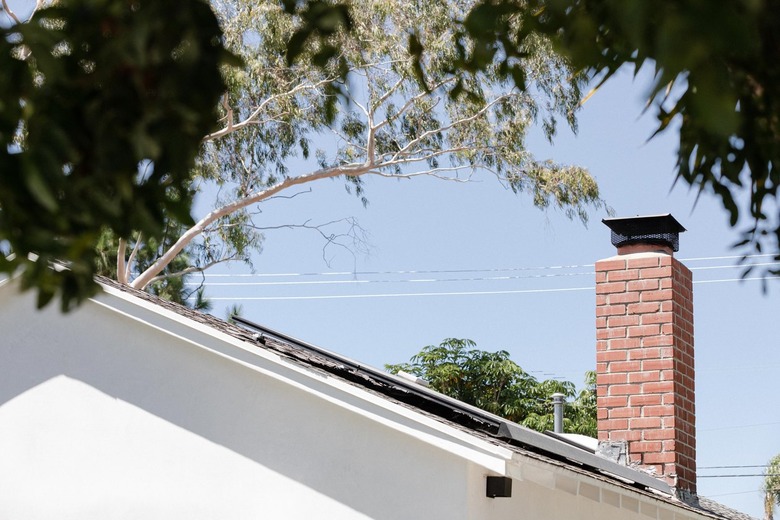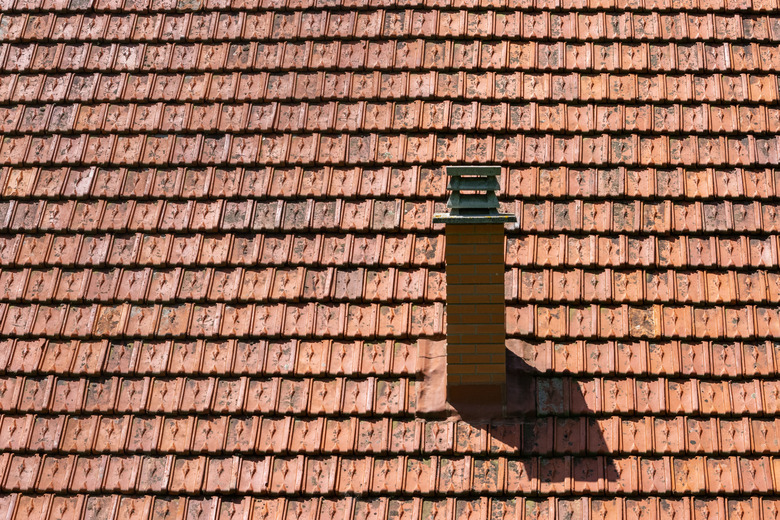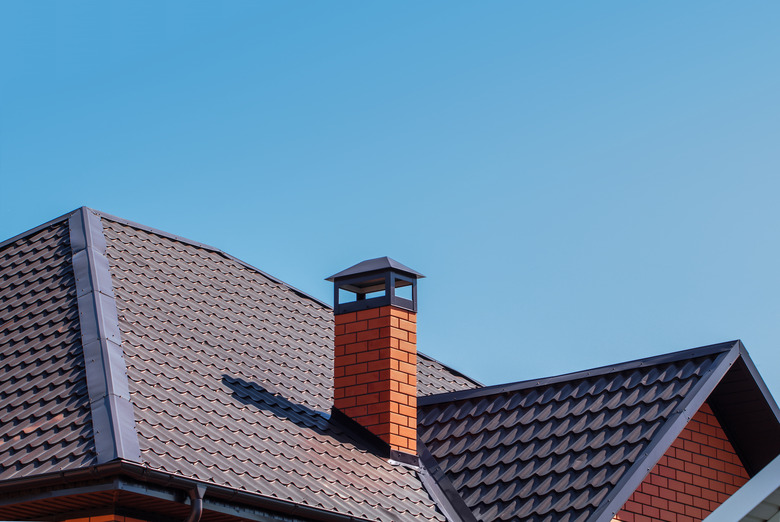6 Common Fireplace Chimney Flue Problems
We may receive a commission on purchases made from links.
Although most fireplace chimneys can do their job for years without a problem, sooner or later, a chimney flue repair will be necessary. Sometimes, the solution to the problem is as simple as a good cleaning, but situations warrant more drastic action.
In any case, it is best to call in a certified chimney sweep to inspect your chimney and lay out a course of action for necessary repairs. If repairs and maintenance are not performed correctly, the chimney won't be able to do its job, and harmful smoke containing carbon monoxide and other contaminants will billow into your home rather than up the chimney where it belongs.
Chimney Components
Chimney Components
To understand where a chimney flue repair may be needed, it's helpful to have a picture of how a traditional masonry chimney is constructed.
Firebox
This is the chamber that holds the fire in a wood-burning fireplace. If you've converted your wood-burning fireplace to a gas fireplace or if you've installed a fireplace insert, the firebox contains the gas appliance or insert. Fireboxes are lined with firebrick or firebrick panels.
Damper
Located above the firebox (or sometimes on top of the chimney), this metal plate is opened when you build a fire to allow the smoke to escape. Close it when there is no fire to seal out the cold air from the chimney.
Smoke Chamber
This is a wide area that collects smoke from the firebox and funnels it into a narrow flue that directs the smoke up and out of the chimney.
Flue
This is the interior of a masonry chimney and the main channel to get the smoke out. In the past, most flues were lined with clay tiles, although some chimneys contain metal flue liners. The liners protect the masonry of the chimney and any nearby combustible building materials from the intense heat present in the chimney.
Chimney Crown
This is a layer of concrete that caps the bricks at the top of the chimney.
Chimney Rain Cap
This protects the interior of the flue from rain, snow, leaves, and other debris. Most have metal screens as sides to keep critters out of the chimney.
Common Chimney Flue Repairs
Common Chimney Flue Repairs
There are a number of situations that require a chimney flue repair. Some of them you will be able to spot yourself, such as a fireplace that won't draw smoke up the chimney; missing components, like no chimney cap; or pieces of flue liner falling into the firebox. When in doubt, call a chimney expert. The Chimney Safety Institute of America recommends an annual chimney inspection and can help you find a qualified chimney sweep near you.
1. Dangerous Creosote Deposits
Creosote, a tarlike substance that condenses onto the walls of the chimney flue, is a byproduct of burning logs in a fireplace or in a freestanding wood-burning stove that is connected to the chimney flue. It is flammable and could cause a chimney fire that is hot enough to rupture the liner, allowing the flames to reach the wood framing of the house. Creosote buildup should be removed when it reaches 1/8 inch thick.
A thorough fireplace and chimney cleaning can remove the creosote. A certified chimney sweep will use special brushes and vacuums to get rid of the creosote deposits. If pros do the job, they will inspect the entire chimney to check for other problems while they're at it.
2. Blocked Up Chimneys
For chimneys that are missing a rain cap, it's not an uncommon chimney flue repair scenario to find that the flue houses a bird's nest or a family of raccoons. If you are dealing with wildlife, call an animal control specialist to evict the animals. They can safely trap and relocate the animals. Then, have a chimney cap installed.
3. Damaged Flue Liner
Clay flue or chimney liners can last over 50 years, but they will eventually wear out and need to be replaced. Rather than ripping the chimney apart to install a new clay liner, it makes more economic sense to have a stainless steel flue liner installed within the original flue.
A pro can install the correct size of flue, as there are different requirements for wood-burning and gas fireplaces. The metal flue is installed through the top of the chimney where it is held in place by a metal cap that attaches to the chimney crown.
4. Damaged Chimney Masonry
The concrete crown at the top of the chimney protects the masonry from water damage. If it is cracked and crumbling, it should be patched or removed and replaced. Most crowns are not visible from the ground, so making sure it is checked periodically is another reason to schedule a yearly inspection.
From the ground, you may notice damaged bricks or mortar on the chimney. Crumbling mortar between the bricks allows in water. If the water freezes and thaws repeatedly, it will damage the brick, causing spalling (pock marks on the surface) where the face of the brick begins to crumble. The solution is to remove the damaged mortar and replace it, a process called repointing.
5. Damaged Chimney Flashing
Chimney flashing prevents water from seeping into the joint where the masonry meets the roof. Damaged or missing flashing must be replaced to prevent damage to the chimney and the roof structure.
Roofers often rely on combining different types of flashing materials when dealing with chimneys. One approach is to install metal base flashing or step flashing where the chimney meets the roof. The top edges of this base flashing are then overlapped by counterflashing that is set into the mortar joint above the base flashing.
6. Chimney Chase Problems
Chimney chases are framed structures that enclose a metal flue. They are usually constructed after the house was built, so they often don't sit on the house's foundation but have their own. Look for problems you would encounter with any structure that is attached to the main house: gaps where the chase meets the house wall, wood rot, missing siding, and the like.
The chase cover at the top of the chase keeps water out of the structure and the fireplace flue. If it is rusted or damaged in some other way, replace it with a new chase cover.


